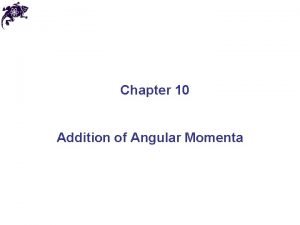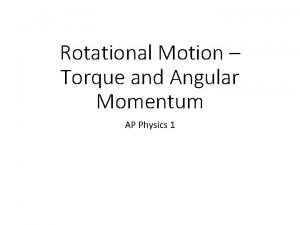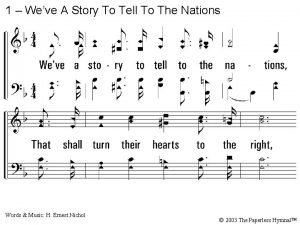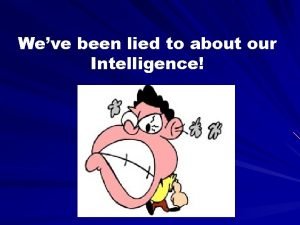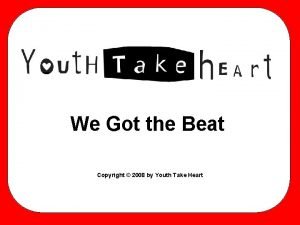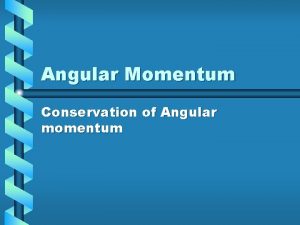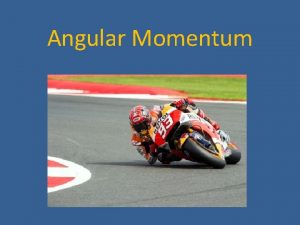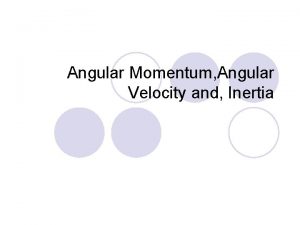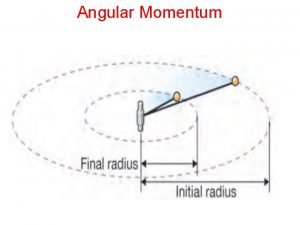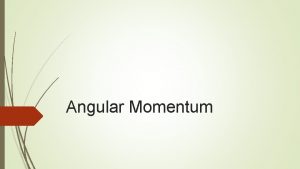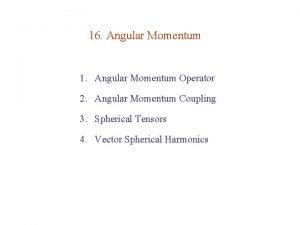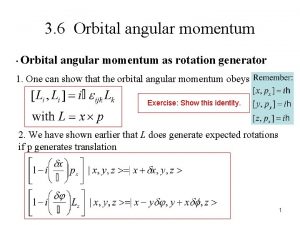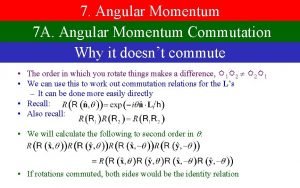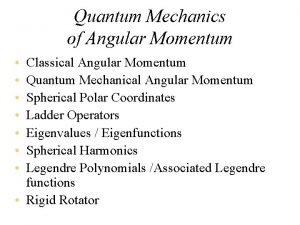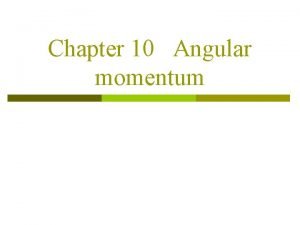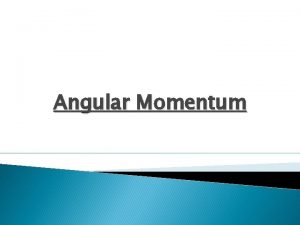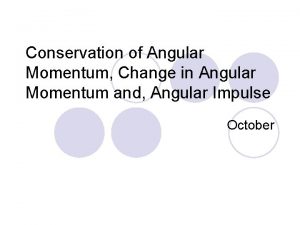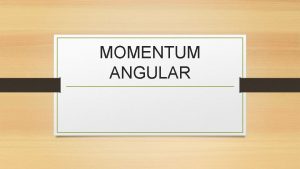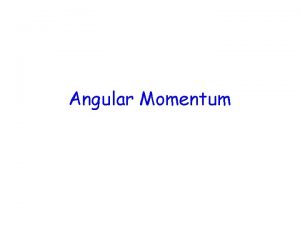Addition of Angular Momentum Weve learned that angular

















- Slides: 17

Addition of Angular Momentum ØWe’ve learned that angular momentum is important in quantum mechanics n n Orbital angular momentum L Spin angular momentum S ØFor multielectron atoms, we need to learn to add angular momentum n n Multiple electrons, each with li and si Spin-orbit interaction couples L and S to form a total angular momentum J 1

Addition of Angular Momentum Ø What is the total spin of two electrons? Ø Again we must take into account that electrons are identical particles 2

Addition of Angular Momentum Ø Comments 3

Addition of Angular Momentum ØComments n The symmetry properties under particle interchange of the wave function for fermions and bosons refers to the TOTAL wave function ψ(space)χ(spin) w For fermions, since the overall wave function must be antisymmetric under interchange of particles 1 and 2, we can have either 4

Addition of Angular Momenta Ø The complete wave functions are n The symmetric spin function could be any of the S=1 triplet states Ø Note that for the S=1 triplet state the spatial wave function has low probability for x 1~ x 2 n Parallel spins repel Ø Note that for the S=0 singlet state the spatial wave function has high probability for x 1~ x 2 n Opposite spins attract Ø This spin pairing arises from the exchange “force” we talked about earlier 5

Addition of Angular Momentum ØComments n Look at the He atom again (1 s 2) w What is the spin of the ground state of He? w What is the spin of the first excited state of He? w Estimate the ground state energy of He w Estimate for the first excited state of He 6

Addition of Angular Momentum Ø Comments n n Based on this example, the rules for addition of (spin) angular momentum are The same rules hold for the addition of any two (or more) angular momenta 7

Spin-Orbit Interaction ØMagnetic field produced by orbiting proton (nuclear dipole moment) 8

Spin Orbit Interaction Ø Quick review of orbital and spin magnetic moments 9

Spin-Orbit Interaction Ø This internal magnetic field gives rise to a spinorbit interaction term in the Hamiltonian 10

Spin-Orbit Interaction Ø Actually this isn’t quite right since the electron is in a non-inertial frame n The correct result differs by a factor of ½ and is know as the Thomas precession 11

Spin-Orbit Interaction Ø Aside 12

Spin-Orbit Interaction Ø Aside, 13

Spin-Orbit Interaction Ø We left the spin-orbit interaction out of the Hamiltonian the first time we did the hydrogen atom n In part, because it’s a small correction Ø The full Schrodinger equation for the hydrogen atom is (neglecting a relativistic correction) 14

Spin-Orbit Interaction Ø Our original quantum numbers for the hydrogen atom were Ø And Ø But with the spin-orbit term in the Hamiltonian, H no longer commutes with some of these operators Ø Before you answer note that 15

Total Angular Momentum Ø The spin-orbit interaction couples the orbital (L) and spin (S) angular momentum to form the total angular momentum (J) n The internal magnetic field is determined by L and this acts on the spin magnetic dipole of the electron determined by S so the two angular momenta are not independent Ø The new “good” quantum numbers of the hydrogen atom are n, l, s, j, mj 16

Total Angular Momentum Ø Coupling of L and S to form J n n L and S precess around J J precesses around the z axis 17
 Addition of three angular momenta
Addition of three angular momenta Angular impulse-angular momentum theorem
Angular impulse-angular momentum theorem The lights from the parlour and kitchen shone out
The lights from the parlour and kitchen shone out Weve a
Weve a Weve been lied to
Weve been lied to Weve got the beat
Weve got the beat Requi
Requi Hãy nói thật ít để làm được nhiều
Hãy nói thật ít để làm được nhiều Thơ thất ngôn tứ tuyệt đường luật
Thơ thất ngôn tứ tuyệt đường luật Gây tê cơ vuông thắt lưng
Gây tê cơ vuông thắt lưng Tôn thất thuyết là ai
Tôn thất thuyết là ai Phân độ lown ngoại tâm thu
Phân độ lown ngoại tâm thu Chiến lược kinh doanh quốc tế của walmart
Chiến lược kinh doanh quốc tế của walmart Sau thất bại ở hồ điển triệt
Sau thất bại ở hồ điển triệt Block xoang nhĩ ecg
Block xoang nhĩ ecg Tìm độ lớn thật của tam giác abc
Tìm độ lớn thật của tam giác abc Thể thơ truyền thống
Thể thơ truyền thống Conceptual physics momentum
Conceptual physics momentum
